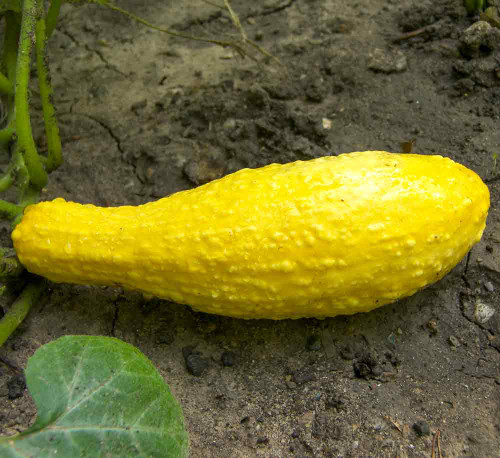Description
Yellow Bush Scallop Summer Squash - Excellent Producer
Delicate and tender when young, growing to a more mature yet still mild flavor when full sized, this is one of the larger patty-pan varieties – reaching upwards of 7" across. Golden-yellow fruits with an attractive scalloped edge are easy to see in the dark green foliage. Very easy to grow with good flavor.
Patty-pan squash are fast maturing, making them an excellent choice for those struggling with perennial squash bug issues. These can be planted a bit later to avoid the peak squash bug season while still producing a sizable harvest.
History
From William Woys Weaver’s excellent book “Heirloom Vegetable Gardening”:
“This squash originated among the native peoples of the eastern United States, for it was known from Virginia to New England by a number of local names in various Indian languages. Both the yellow and white varieties date from pre-Columbian times, although the white has gradually supplanted the yellow over the past century and a half. In England, this squash is known as the custard marrow, in France as the patisson panaché. The old name cymlin or cymling was given to this squash in the 17th century, owing to its similarity in size and shape to the English simnal cake, a fluted cake made during Lent.
One of the oldest depictions of the patty-pan squash appeared in Mattias de l’Obel’s Plantarum seu Stirpium Icones (1591). The fruit looks very much like the patty-pans of today. The fact that this East Coast squash appeared in European botanical works prior to white settlement in the region suggests intriguing pre-contact seed exchanges that have not been given much notice by plant historians.”
Uses
When young they are very tasty lightly steamed or pan-roasted and drizzled with a high-quality olive oil, or simply diced into cubes and tossed in salads. After maturing they were often sliced into rings and hung on rods to dry, then stored for winter use by the Native Americans. They were used much like soup stock or a base with other dried and roasted nuts and seeds, making a rich and hearty vegetable stew.
Growing Tip
Sow 5 seeds per hill, 4' apart. Thin to best 2-3 plants. Squash seeds dislike cold soil. It's better to wait until the soil is warm to plant the seeds.
Learn More
- Steam Spaghetti Squash with Pasta Sauce
- Roasted Butternut Squash Soup
- Squash Bugs and Ways to Deal With Them
From the soil to the seed to the food you eat - we'll help you grow your best garden!
1 Review
-
Very tasty
I've grown this variety for four years now and it is one of my favorites. It's easy to grow in my raised beds and produces scads of delicious fruits. I harvest them when they are young as that is when the skins are most tender. Like all patty pan types, the skins are difficult to peel if you let them get too big. Truly excellent flavor whether raw in salads, sauteed or grilled. I grow patty pan and Black Beauty Zucchini every year and am rarely disappointed.









